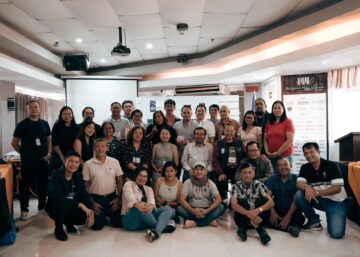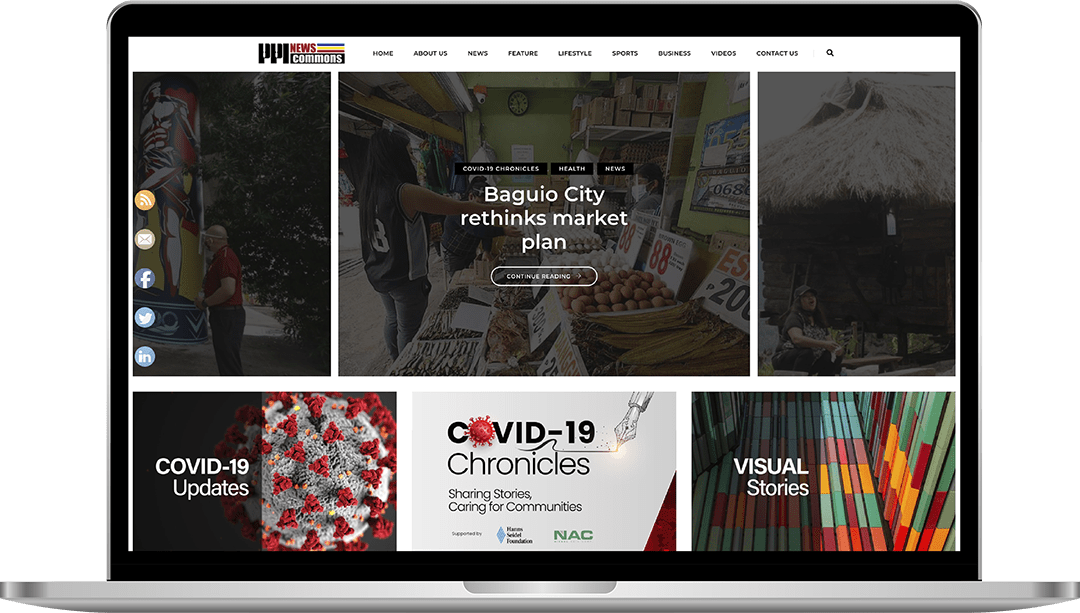For decades, indigenous peoples (IP), or lumad, in the country have endured systemic neglect and discrimination. Some of the physical structures that are meant to serve their collective needs such as education are a testament to this sad reality.
Imagine a school that looks more like a shed, with only a roof over it and an unpaved ground that easily turns murky when rain pours.
Despite these constraints — emblematic of what is widely perceived as state neglect, compounded by societal apathy — the school is used simultaneously by primary and secondary students belonging to seven tribes. Only a makeshift wall divides them while learning lessons that are in keeping with their culture, alongside government-mandated subjects.
The Bukidnon-based Mindanao Tribal School, Inc. (MTSI), a private school measuring only 8 by 20 meters and located on a four-hectare piece of property, reflects both the aspirations and struggles of the IP communities in the country to preserve their collective identity while fighting various forms of discrimination.
Right beside this facility is the administration office that also functions as a library, made from recycled wood and nipa shingles.
MTSI seeks to impart to its students the lumad traditions, belief system, and other forms of traditional knowledge and wisdom handed down through many generations.
The school, in its current form, is borne of “the social neglect (suffered by the Manobo and other indigenous groups whose children go to the school),” said Amelia Bojo, president of the MTSI and one of the volunteer teachers in the school.
Yet the communities involved, notably the Manobo, have learned to “harness our own initiative and ingenuity to acquire building materials,’’ which included salvaged tin sheets and other construction materials, she said.
“You can’t talk about inclusive infrastructure when the social structures are exclusive (or discriminatory), said Easterluna Luz Canoy, executive director of Kitanglad Integrated NGOS, which seeks to promote the rights and well-being of IPs.
The social exclusion of indigenous communities in the country has resulted in inadequate access to basic services like housing, health, and education, said Canoy, who has at least three decades of working among IPs tucked under the belt.
Bojo, who also teaches at the Central Mindanao University in Bukidnon, admitted that the school, as it stands today, is “not reflective of who they (the lumad) are but who they have become” in the face of historical neglect.
Still, the IPs hope to see a school building rise that truly conforms to their own design, with a tree plantation, garden, dormitory and other facilities that should comprise what is called a School Living Traditions, which transmits indigenous skills and techniques to the young.
Participants to the seminar-workshop on sustainable construction reporting organized by the Philippine Press Institute (PPI) recently, in partnership with Holcim Philippines, in Malaybalay, Bukidnon, witnessed the situation confronting the lumad and gained insights into their dedication to building structures that truly reflect their identity and aspirations as a people.
A visit to the MTSI in Panadtalan, Maramag town — about an hour and a half drive away from the provincial capital — afforded the journalists such an opportunity. They soon found that the school had little to show by way of modern amenities. Yet, here, said Bojo, students “find their identity, a sense of belonging.” She added that it is “a source of pride, so the students endure the difficulties.”
The Japan International Cooperation Agency once offered to build a school for the indigenous peoples on this side of Mindanao, but required the use of its own design, prompting the lumad to turn down the offer, said Bojo.
The seminar-workshop brought into focus infrastructure reporting through the lens of sustainable and inclusive development. Stories, for instance, that bring to the fore the aspirations of the lumad even as they build their own facilities should impress on the readers that physical structures are more than just facilities but are expressions of who they are as indigenous communities.
The visit to MITSI was one of the highlights of the Mindanao leg of the seminar-workshop, themed “Taking the High Road to Constructing Reporting” organized by PPI and Holcim, a major cement and aggregates company.
Some 20 participants from different provinces within the island region got a deeper glimpse into the plight of some of the indigenous tribes, including the the Manobo, in Mindanao. They learned how the latter’s culture intersects even with the designs of their facilities including those for their communal use.
The media seminar was previously held in Bulacan, where the Luzon-based participants looked into issues surrounding resettlement facilities being provided by the government for informal settler families. The final leg of the training was conducted in Tagbilaran, Bohol, where the Visayas participants looked into the situation of the disaster-affected parts of the province almost three years since it was hit by an earthquake.
The seminar stressed that media coverage of the construction industry has largely focused on the physical and technical aspects, often citing details such as the magnitude of a project, its target cost, date of completion, and the technology used, among others.
It was hoped that journalists would explore more interesting stories, such as those that highlight how a planned infrastructure project could impact a community, for good or ill. Such an approach forms the essence of civic journalism, PPI’s flagship program.
“In civic journalism, we give voice to the people. We owe it to the public to present stories that resonate with them — stories that would be useful for them even if their subjects, such as construction, may not be deemed ‘sexy’,” said PPI training director Tess Bacalla.
The seminar therefore sough to challenge the media to explore unreported or underreported issues revolving around the construction industry through the prism of inclusive growth.
Target issues for sustainable construction
Don Carreon, Holcim’s media specialist, discussed the five “target issues” that underpin sustainable construction. An infrastructure project, he said, should demonstrate innovative concepts in terms of design, materials and methods which should be transferable to other applications.
Efficient and nature-friendly use of natural resources is also vital to any sustainable construction project, aside from its aesthetic impact as a form of cultural expression. The industry must also exercise flexibility to adapt to change, Carreon added.
Equally important in the sustainable construction is the participation of communities in construction or infrastructure development efforts to ensure social inclusion at all stages.
Dr. Adoracion Navarro, senior fellow of the Philippine Institute for Development Studies, a public think tank, provided a macro perspective on infrastructure issues affecting the country during the seminar. The construction sector contributes about 6 percent of the GDP, an indication of the enormous role it plays in the pursuit of economic growth.
She said Mindanao has seen more construction projects being undertaken by the government. Yet, such efforts have not necessarily translated to inclusive growth, especially for indigenous communities.
Tess Bacalla/PPI (With contribution from Ron Lopez)














